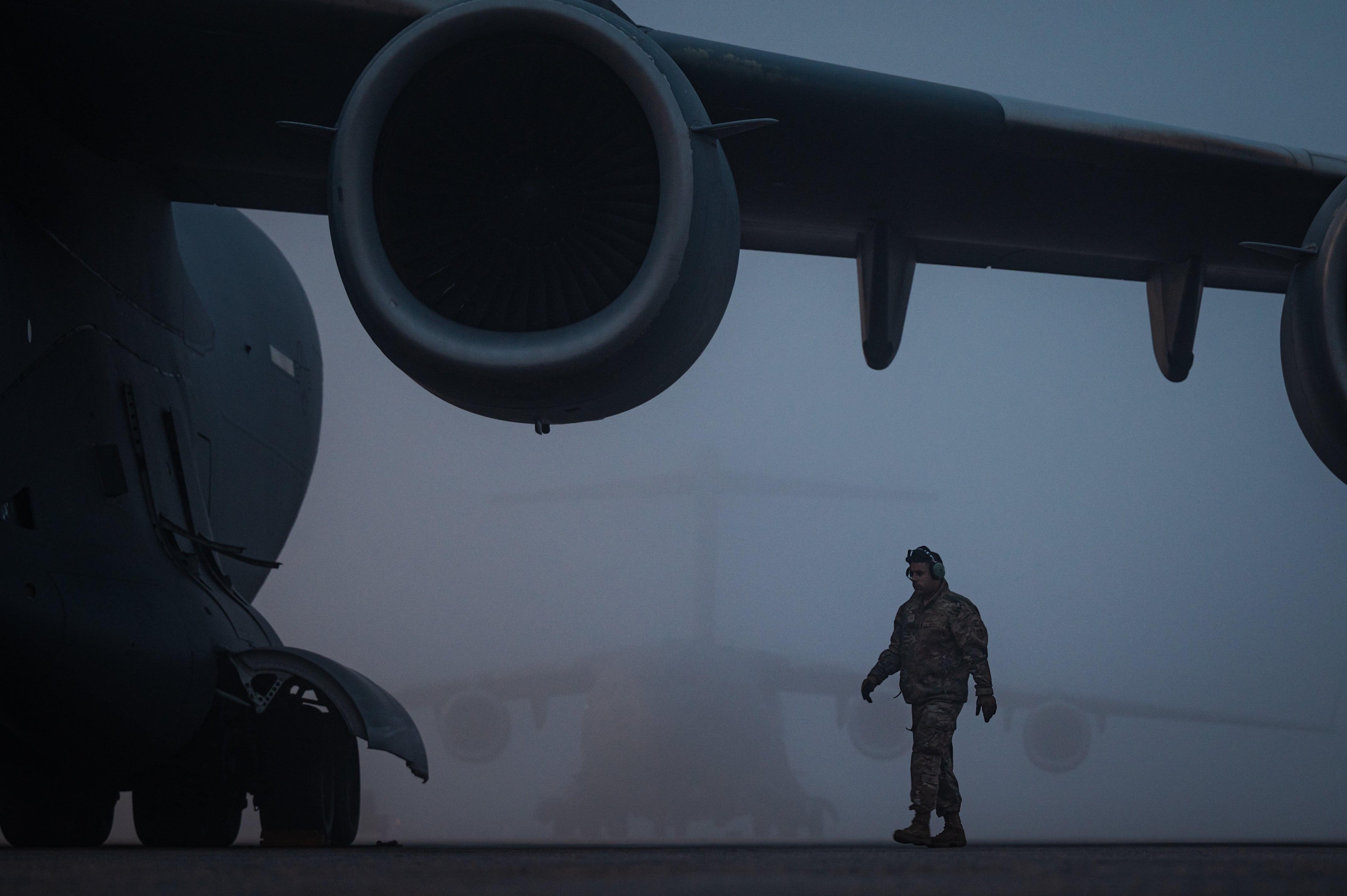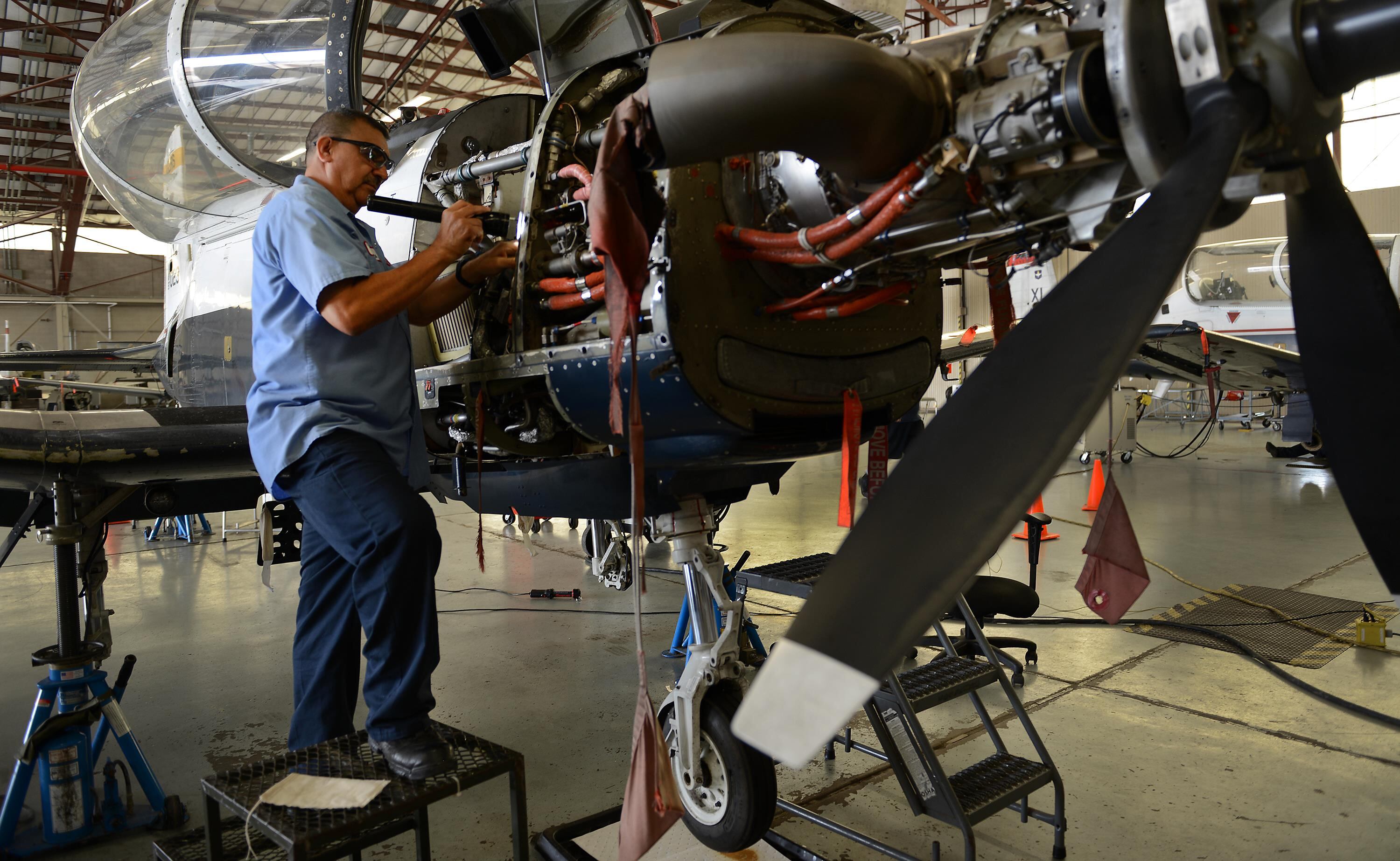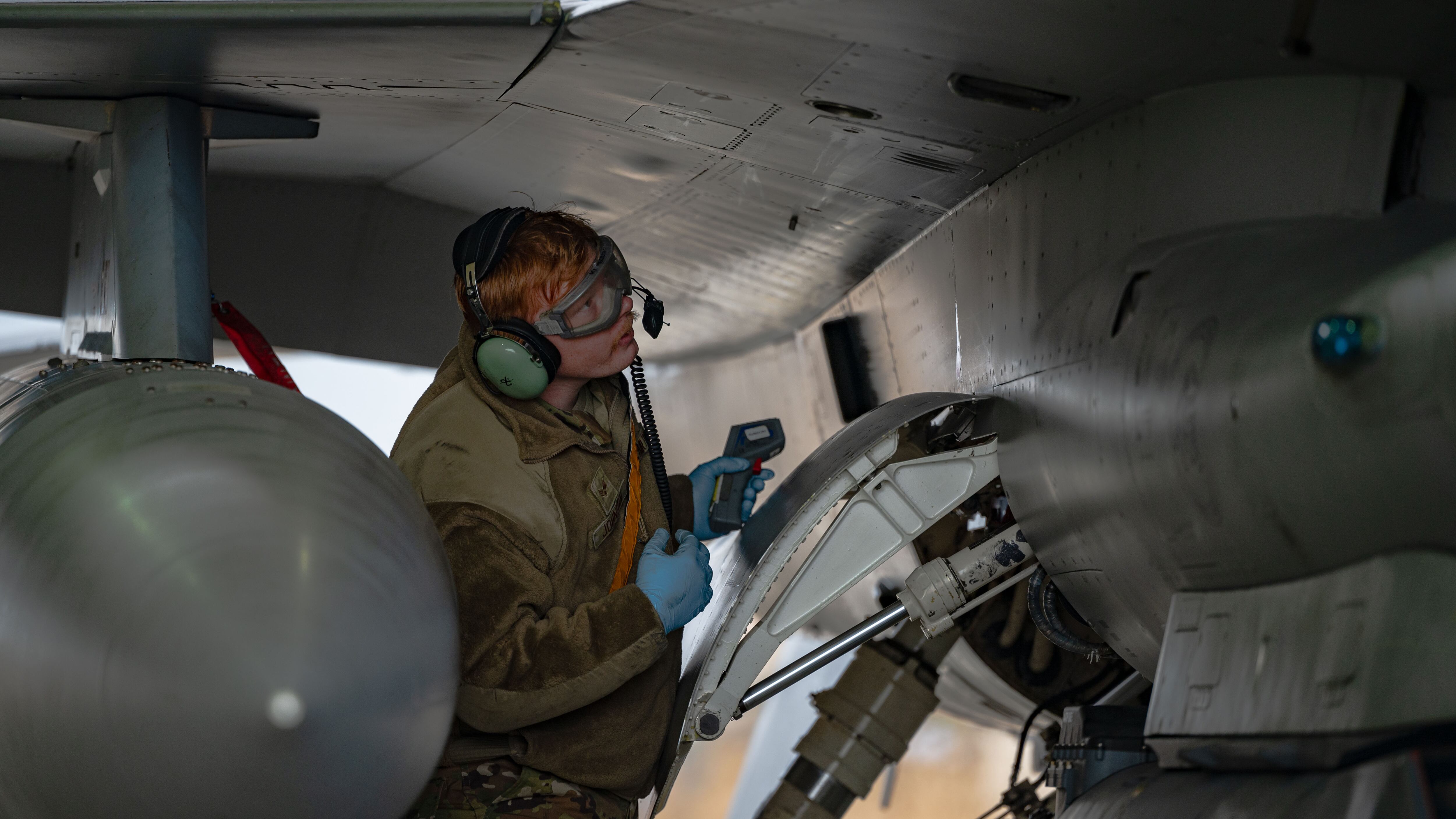The Air Force has been unable to pinpoint what caused last year’s costly spike in maintenance-related aircraft mishaps, according to the service’s top leaders.
In an interview with Air Force Times, Chief of Staff Gen. David Allvin, the service’s highest-ranking officer, and Chief Master Sgt. of the Air Force David Flosi, its top enlisted leader, said that while attempts to find a particular culprit behind the accidents have not borne answers, the service is continuing to examine why mishaps jumped. The service is “doubling down” on managing risk at the unit level, Allvin said, while ensuring airmen’s training isn’t rushed — potentially endangering troops who misunderstand instructions or skip steps.
RELATED

“We’re really hunting and pecking to see if there’s anything specific,“ Allvin said of maintenance-related accidents. “We have not found a specific cause. But it certainly has caught our attention.”
The Air Force’s most serious non-combat mishaps jumped to a five-year high in fiscal year 2023, while at the same time, accidents occurring during ground maintenance nearly doubled from from the previous year, Air Force Times previously reported. The incidents have cost the service millions of dollars and injured a growing number of maintainers as the Air Force’s stretched-thin maintenance corps juggles an aging aircraft fleet.
Among the most serious incidents, Stephanie Rodriguez-Cosme, a 32-year-old test engineer and contractor, died after she was struck by an MQ-9 Reaper drone′s whirring propeller during ground testing at Grey Butte Airfield, California, in September.
An Air Force investigation said Cosme was incorrectly trained on taking data readings with the drone’s engine running, and wasn’t paying close attention as she approached the aircraft. Investigators also cited a lack of clear communication between contractors and ground support personnel, and said they were rushed because of previous delays.
Aircraft engines, towing mishaps and wayward flashlights have also caused problems. In one case, a handheld flashlight caused about $4 million in damages to an F-35 assigned to the 56th Fighter Wing at Luke AFB, Arizona, after it was sucked into an engine during a ground run, an investigation revealed.
In two cases, maintainers encountered damage while installing engines in CV-22 Ospreys, including a winch cable that broke, damaging several components.
“Our older aircraft are finding new and interesting ways to break,” Allvin acknowledged.
RELATED

Mishaps arising during maintenance have particularly concerned Air Education and Training Command, which said in February that “preventable” accidents have accounted for more than $50 million in damages since September 2018. In February, the command rolled out a two-page worksheet that it is now requiring each of its active duty and civilian maintainers fill out before taking on a new task as a way to assess risk and enforce safety protocols.
But operational risk management goes beyond safety, Allvin said. He doesn’t want the “cumulative impacts” of the service’s push to build multi-capable airmen — aiming to equip troops with skills outside of their work specialty to make the force more nimble — to detract from maintainers’ focus.
“The concept of operational risk management is not something that should just be seen as a safety thing,” he said. “It needs to be something that we’re more comfortable with really turning into a science, really understanding not only what the makeup of my crew is, but what is the makeup of my crew today? Where are we today? What is the cumulative stress we’ve had?”
Flosi added that as the Air Force’s training enterprise evolves, it hopes to adopt technology that will improve how airmen qualify to work on multimillion-dollar aircraft and the weapons and sensors they carry.
RELATED
“We’re not going to take risk in these safety-of-life issues and bring in somebody that’s completely unqualified to load an aircraft with explosives,” said Flosi, a career munitions maintainer.
At the same time, with the help of retention bonuses, the service has begun to stop the downward spiral as experienced maintainers leave the service, though Allvin said those numbers are “still not comfortable.” Short staffing, coupled with the high operational tempo of the past two decades and airplanes that get harder to fix as they age, has frustrated the service’s maintainer corps for years.
The Air Force had exceeded its recruiting target for aircraft maintainers for the current fiscal year by more than 60 airmen as of mid-May, with nearly 3,600 new maintainers shipped to basic military training so far in fiscal year 2024, according to the Air Force Recruiting Service.
But a gap of more than 500 maintainers persists, according to the most recent figures from the Air Force Personnel Center, and the newest recruits are still years away from working on airplanes.
“We’re recruiting OK, but it takes a while to build a 3-level into a 5- and 7-level,” Allvin said, referring to the progression in skill from apprentice to journeyman to craftsman. “I think we’re making progress. The retention initiatives seem to be working OK. We’re not to the point where we need to be, though.”
Courtney Mabeus-Brown is the senior reporter at Air Force Times. She is an award-winning journalist who previously covered the military for Navy Times and The Virginian-Pilot in Norfolk, Va., where she first set foot on an aircraft carrier. Her work has also appeared in The New York Times, The Washington Post, Foreign Policy and more.




